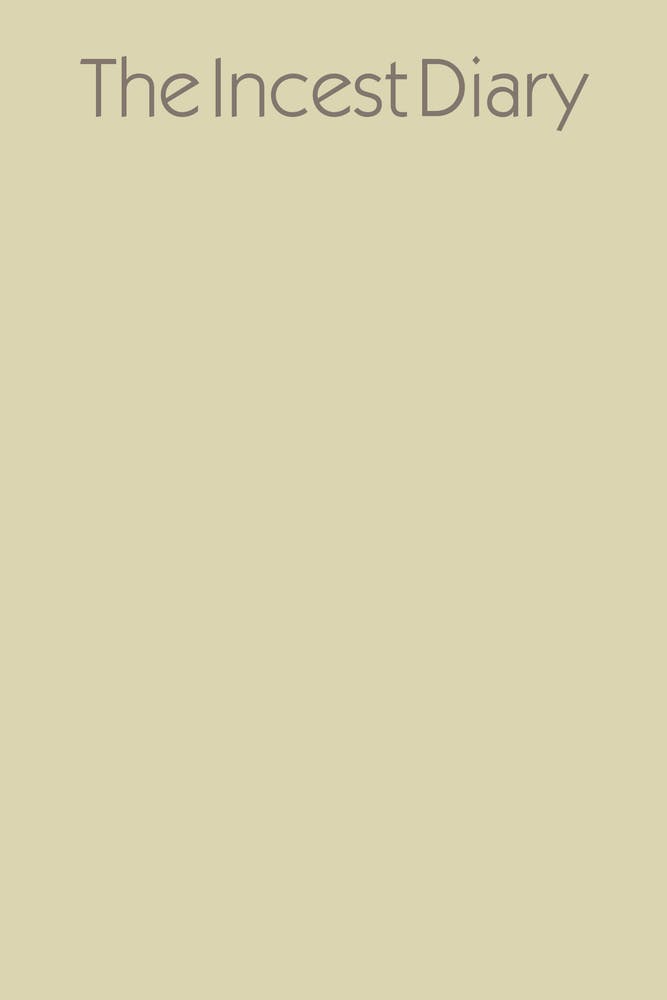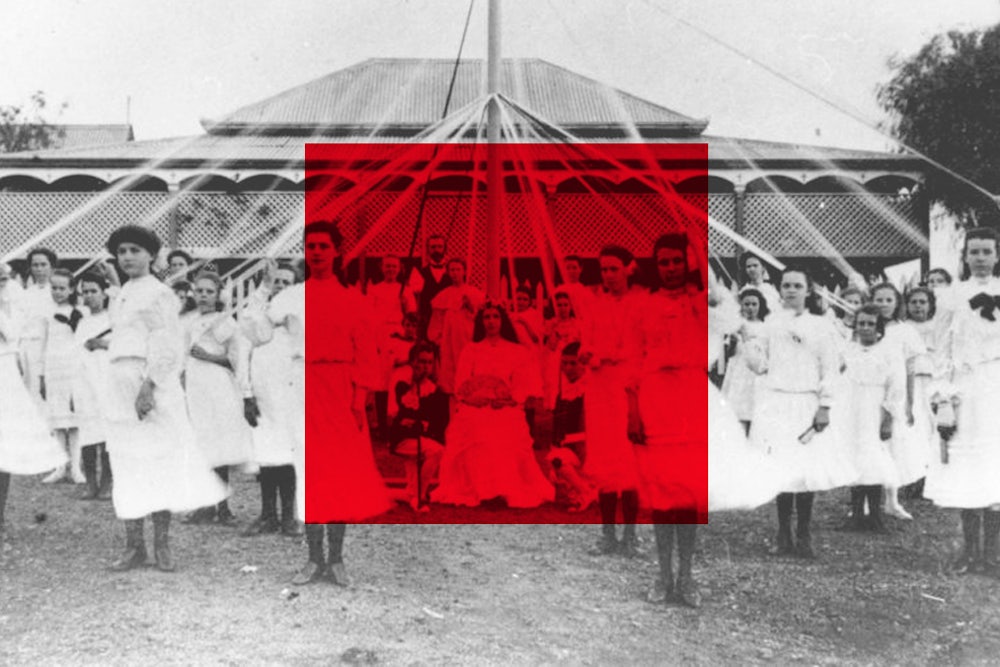
Sexual abuse in families is not rare. Yet it is almost made invisible by the layers of stigma in which it is wrapped, which are so dense as to be opaque. Consider The Incest Diary, a memoir by an anonymous woman that describes her father’s abuse of her from early childhood through adulthood. The abuse is violent and persistent. She describes his acts upon her child’s body in detail. When I saw this title in the catalog from Farrar, Straus and Giroux, I could not understand what it was doing there. FSG is a literary outfit, not the publisher of misery memoirs for the prurient.
Such was my prejudice, and such is the prejudice of a society that thinks the victims of abuse do not quite have the right to their own experiences, including the right to turn them into literature in whatever way they please. The critical reception has demonstrated this assumption amply. In her cruel review in the Telegraph, Allison Pearson wrote that “the reader who would like it best is a pedophile,” because the book describes what pedophiles do to children. In the Times, Dwight Garner wrote, “This book offers more sensation than perspective.” He also called some of the author’s descriptions “porn lingo.”
The crimes committed against the author of The Incest Diary have so wholly shaped her sexuality that she comes to ambivalently enjoy these encounters, and to place the rest of her sexual life in relation to them. She writes about an orgasm she has with her father that is more powerful than any she subsequently experienced in a twelve-year marriage. So yes, she writes about her father’s “big hard cock.” Porn lingo such words may be, but they are the truth about the formative role that the abuse has played in her sexuality. How can one be polite, when what one means is “big hard cock?” Should she not use the word “pussy,” because she’s talking about her dad touching it? And if those words are what it takes to communicate the truth in writing, then what other words can she use?
“When Richard Serra was a boy,” the Diarist writes, “he was standing on the shore and he watched an old ship get launched into the sea.” The sight of “this gargantuan thing” held up by the water is the origin story of Serra’s obsession. “He says he thinks that all of his work might be about that day—about the transfer of mass and heavy things being buoyed up.” The vision of the old ship was a childhood experience that dictated aspects of Serra’s existence—his sight, his perception of shapes, the meaning of space. The Diarist relates. Even when she writes about the love that is mixed into her hate for her father, the author is aware of the shape of the story under her control. “Is this a love story? It’s a creation story,” she writes. “Maybe all of the things I do are about my father raping me before I knew how to read and write.”
The Diarist feels that people will know that she has had sex with her father just by looking at her. As a child, she “was too shy to stick out [her] tongue around other people,” fearing that “they would be able to tell that this tongue had licked a penis.” She was uncomfortable drawings birds, because her “vagina looked like a bird. Like how you draw a bird—an m in the sky, with soft tips, like a McDonald’s m.”
The relationship between art, the Diarist’s vagina, and the sky is a subtle but extraordinary motif in The Incest Diaries. When she was “eight or nine years old,” the father tied her to a chair and “put the knife inside and he cut.” The Diarist’s experience of this violent act approaches the sublime:
I was so uncomfortable and so frightened that it made me light. I floated up out of that bedroom and house. I lived in the sky. I played in the clouds. My body was down in that house, but I was up in the sky. I was the sky. I was endless blue sky when I was tied to the chair when he put the knife inside and cut.
This is not the kind of sublimity that lets a reader lose herself in the immersive detail of narrative. The effect is the opposite: instead of the reader being distracted from their disgust by marvelous details (see: Death in Venice, Lolita), the author disassociates herself from the discomfort, refusing to take the reader with her.
The Diarist uses art as a way to communicate. Her mother knows that the father is having sex with her, but she refuses to acknowledge it. The Diarist writes that the mother’s denial is more hurtful than anything the father did. In response, the Diarist speaks to her mother about violence, wishes to show her violent images. She shows her “pictures of the slain beauties at La Specola, the natural history museum in Florence.” Those beauties have “their innards exposed—intestines and livers and stomachs, hearts, kidneys spilling out of their perfectly made, peeled-open, and glowing wax skin. Their faces are peaceful; they wear pearls; they lie on beds of lace.”
The visual becomes a means of communication, as well as a space of identification for the Diarist, especially when she looks at works from the past. The second part of the book describes her time living in Chile and a man she loves there. She likes to look at his “art books.” She looks at “the carnivals in Ensor, the contorted pink and yellow faces, his fat pope, the death mask.” She looks at “the breastfeeding Byzantine virgin with her long, stretched-out nipple between her baby’s lips.” She looks at beautiful images of Saint John the Baptist, she looks at “Fede Galizia’s cherries, her pears, figs, rabbit, sliced-open melon. Piet Mondrian’s sharp and pure country drawings. Morandi’s bottles and vases and jars.”
These passages stand in stark contrast to the Diarist’s descriptions of the abuse at home, which are spare and unsparing. Her descriptions are simple and almost resistant to imagination. She refuses to buy grapeseed oil “because it had the word rape in it.” She describes her sexual relationship with a man named Carl in harrowing language. “The fact that my father raped me makes him want me more.” Her father had tied her up and put her in the closet. So Carl tied her up and put her in the closet. “He let me out and face-fucked me. How could I not love the man who set me free?”
There are three main genres of abuse-writing. There is the autobiographical account—the so-called misery memoir of A Child Called “It.” Then there is the high literary abuse novel by an established author like Nabokov or Mann. These books are part of the broader literary genre of sexual transgression, the home of writers like Leopold von Sacher-Masoch, his partner in idiom the Marquis de Sade, Algernon Charles Swinburne, D. H. Lawrence, and so on. This genre is totally dominated by men. The third category covers the salacious, hacky books, such as The Flowers in the Attic.
The Incest Diary does not fit into any of these categories. Instead, it belongs to the tradition of intensely autobiographical women’s literature, or women’s life-writing, of the kind brought into the mainstream this century by Maggie Nelson. The Diarist sees herself as such a writer through a metaphor. Her father pulls a “blanket with a hole” over her, a blanket that is embarrassing because it does not fully do its job. He cloaks her in that layer of secrecy and stigma—“All of me was to be hidden”—but shames the part of her that shows through. She makes of it a “confessional blanket. I’m talking through the hole in the blanket and all you can see is my mouth.”
As a symbol of a woman’s anonymous authorship, the blanket with a hole is appropriately degrading. This book is no more than a broken thing, a gap in the covering of nakedness. And so the degradation of the Diarist’s language, which has so appalled her newspaper critics, comes to represent a kind of nakedness in communication. When a person tries to use language to describe the experience of being fucked by her father who stinks of white wine under a blanket that does not even cover her, what parts of herself and what parts of speech can be adequate to the task? She remembers “the embarrassing and sexy feeling” of her nipple showing through it. She puts her eye to the hole, to see; her mouth, to speak.
